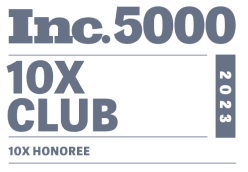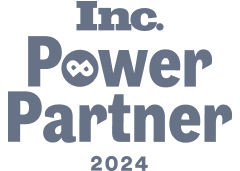- Home
- Digital Marketing
- Learn
- Marketing KPIs
12 Marketing KPIs That'll Revolutionize Your Campaigns
The increased focus on Internet marketing is why businesses need to reassess their marketing key performance indicators (KPIs), which provide companies with concrete metrics for measuring the success of their marketing efforts.
Learn more about the most valuable marketing KPIs, below.
And don’t forget, we’re a full-service digital marketing agency that provides our services to clients all around the world. So whether you need digital marketing in Jacksonville or video marketing in Harrisburg, WebFX offers it all.
Want to improve your online marketing?
We foster and form long-term partnerships so that your business has long-term results.
Over 90%
What is a KPI in marketing?
In marketing, a KPI is a numerical metric that provides valuable data on the effectiveness of a marketing campaign. Companies can use KPIs to monitor their progress on certain marketing goals, such as increasing lead generation percentages or email newsletter sign-ups.
A few examples of KPIs in marketing include:
- Customer acquisition cost (CAC)
- Click through rate (CTR)
- Cost per action (CPA)
- Abandonment rates
- Marketing qualified leads (MQLs)
Learn more about some of these KPIs, such as MQLs, in the next section.
Which marketing KPIs should a company track?
Whether you’re a home service business or a financial institution, there is a set of marketing KPIs that you want to prioritize in your digital marketing campaigns. By tracking these KPIs, you’ll revolutionize your marketing campaigns, improving their accuracy and results.
The 12 marketing KPIs to track include:
1. Organic search
A core part of your digital marketing strategy is likely search engine optimization (SEO). This strategy focuses on improving your online visibility to users and search engines by increasing your ranking in search results.
As an example, your website may appear on page four when users search for, “business banks in san diego.” With SEO, you’re aiming to improve the position of your website — so instead of appearing on page four, you appear on page one.
To track the performance of your SEO, whether you manage your strategy in-house or invest in SEO services from an agency, you need to include organic search as one of your marketing KPIs. While you’ll monitor the traffic your website receives, you want to focus more on concrete metrics that drive results for your company, like increased revenue.
A few examples of organic search metrics to watch are the number of leads and customers that came from organic searches. In most cases, you’ll discover that certain organic searches drive more leads than others — these will become high-value keywords for your organization.
2. Unique website visitors
While your overall website traffic is somewhat of a vanity metric, your unique website visitors is a marketing KPI that offers insight into your website’s performance. It also provides perspective on the percentage of visitors that become leads and customers.
This metric is one reason why digital marketing offers significant advantages over traditional marketing. In comparison to traditional marketing, digital marketing lets you track the path of a user through your buying funnel. With traditional marketing, it’s difficult to determine what brought a customer to you.
Use Google Analytics to track your website’s unique visitors.
3. Abandonment rate
With the prevalence of ecommerce stores, abandonment rates are becoming a critical marketing KPI. Whether you’re a full-fledged ecommerce store that offers a complete line-up of products or a mid-sized service provider that offers online purchase options for your services, you need to monitor this metric.
By evaluating your abandonment rate on a routine basis, you can develop a plan for decreasing your abandonment rate. A variety of factors can contribute to a high abandonment rate, which is why you may need to invest some time in A/B testing.
A few examples of features that could cause a high abandonment rate include:
- A long checkout process
- A checkout process that’s not user-friendly
- A series of unexpected costs, such as shipping
- A requirement to create a user account
The good news is that a few tweaks to your checkout process can lead to big changes.
4. Landing page conversion rates
Another marketing KPI that may require some A/B testing is your landing page conversion rate. Whether you’re focusing on SEO or developing a comprehensive strategy that features PPC, plus SEO, you want to check-in on your landing page conversion rates.
What is a landing page conversion rate? When users arrive on your website, whether from your paid listing through PPC advertising or your organic listing, they arrive on a designated landing page, such as your homepage or service page.
When measuring your landing page conversion rate, you’re looking to see if users took the action you wanted — or if they converted. If users arrive on your service page, for example, the conversion you’re likely monitoring is their request for a quote or their submission of a contact form.
Like abandonment rate, landing page conversion rates can improve with some minor changes. The redesign of a landing page, for instance, can lead to improvements in usability while the revision of some content can improve the persuasiveness of your page.
If you’re looking to not only measure but boost your landing page conversion rate, there are plenty of examples of landing pages that convert. When modifying your landing page, however, keep in mind your audience — what works for one company may not work for your business.
5. Cost per lead
The monetary value of this marketing KPI makes it a must-measure metric. Your cost per lead, also known as customer acquisition cost (CAC) measures how much your company pays to generate a new lead through its digital marketing efforts.
Determine your CAC by calculating your total marketing costs, which you’ll then divide by the number of customers acquired. As an example, if your company spent $45,000 on digital marketing and earned 300 new clients, then your CAC is $150.
Depending on the cost of your product or services, plus the average lifetime value of your customers, you may see this as a positive or negative CAC. The good news is that you can improve your CAC, such as by reducing your investment in PPC (whether that’s lowering your budget or lowering your investment in PPC services from an agency) and increasing your marketing focus on SEO. The good news is that you can improve your CAC by leveraging effective strategies like PPC advertising, which can drive high-quality leads quickly, while also balancing your investment in SEO for long-term growth.
6. Marketing qualified leads
The next marketing KPI to focus on is your marketing qualified leads (MQLs). These are leads that meet your ideal customer. If you’re a residential deck company, for example, your target audience may focus on homeowners between the ages of 35 to 39 with an annual income of $100,000 or more.
As a result, to classify a lead as an MQL, they would need to meet those requirements. This KPI is useful because it offers insight on your marketing efforts, as well as reveals if you’re connecting with the consumers that matter most to your business.
Depending on your initial results, you may need to narrow or broaden your MQL. If you’re noticing a high MQLs percentage, for example, reassess your requirements for an MQL — take the same steps if your MQL is abnormally low.
7. Sales qualified leads
A marketing KPI that you often hear with MQLs is sales qualified leads (SQLs). Unlike MQLs, an SQL is a lead that not only matches your ideal customer but they’re also a lead that’s ready to purchase. As a result, they convert fast.
Like MQLs, you want to monitor your SQLs on a frequent basis. If you notice a sudden drop in your SQLs, it could indicate a misstep in your digital marketing strategy. In comparison, a moderate rise in your SQLs can hint that your team is making positive changes.
To calculate your SQLs, you may need to coordinate with your sales team.
8. Closing rate
Another metric that will require some teamwork is your closing rate. With this marketing KPI, you’re looking at the percentage of MQLs and SQLs that converted by purchasing your product or service. While your digital marketing efforts influence this rate, so do the members of your sales team.
It’s critical that your closing rate is a positive number. If not, that indicates that your company’s not earning new clients, which is vital to your continued success and growth. Should your closing rate continue to decrease, consider reassessing your marketing and sales processes.
A few factors outside your control that could impact your closing rate include the quality of your services or products. If a business delivers subpar products or services, it can lead to negative reviews, plus less-than-stellar word-of-mouth recommendations.
9. Customer retention
It costs ten times more to earn a new customer than to retain one, which is why customer retention is one of the most valuable marketing KPIs. While your marketing efforts may focus on generating new clients, you should dedicate some time marketing to your existing clients.
In digital marketing, you have several ways to build customer relationships, including:
- Email marketing: Create an email marketing campaign for your existing clients. Share company news, such as new services and products, as well as industry-related news. Make sure you’re delivering emails that offer these readers value.
- Content marketing: Use content marketing, which generates three times more leads than traditional marketing, for current and potential clients. Content can include blog posts, guides, and more.
- Social media marketing: Embrace your social media presence by providing your audience with a memorable experience. Use your social media accounts to engage with users, as well as share updates, stories, and other information that offers value.
Like your closing rate, external factors influence your customer retention rate. By monitoring your customer retention rate, you may discover these factors. That can lead to improved business processes and an increased customer satisfaction rate.
10. Customer lifetime value
The next marketing KPI you want to track is your customer lifetime value (CLV). This metric predicts the net profit you can expect from a customer, which will vary by your industry and service — a residential deck company and a financial institute, for example, will have different CLVs.
Calculate your CLV by dividing your average order value by one, minus your repeat purchase rate. Next, subtract your CAC from your total. The result is your CLV — keep in mind, this is an average, which means some clients may spend more or less than that.
Set a schedule for calculating your CLV, such as on an annual or quarterly basis, for the best results.
11. Net promoter score
A newer marketing KPI is Net Promoter Score (NPS), which ranges from 100 to -100. This metric tracks the happiness of your customers by surveying how likely they are to recommend your business to someone else.
While the ideal score is 100, it’s often difficult to attain. Industry averages also vary, but if you’re able to earn a high NPS, you can use it in your marketing campaigns as a trust signal, which can persuade consumers to become customers.
12. Return on investment
One of the most valuable marketing KPIs is your return on investment (ROI). If you’re not earning a return on your digital marketing efforts, it often signals a need to reassess your campaigns. In most cases, however, digital marketing delivers an impressive return.
A few examples of the results of digital marketing include:
- PPC drives an ROI of $8 for every $1 invested in Google Ads.
- Email marketing provides an ROI of $44 for every $1 invested.
- Influencer marketing offers an ROI of $6.50 for every $ invested.
For maximum insight into your digital marketing efforts, calculate your total ROI, as well as individual ROI. By seeing how much your digital marketing is driving results for your company, you can optimize your spending, as well as modify your campaigns.
Good agencies have more than 50 testimonials.
Great agencies have more than 100 testimonials.
WebFX has over 1,100+ glowing client testimonials.
See What Makes Us Stand out

Need help improving your marketing KPIs?
At WebFX, we bring more than 29 years of experience to digital marketing. With our expertise, as well as passion, we’ve driven more than $10 billion in revenue for our clients and more than three million leads in the past five years.
If you’re ready to improve your marketing KPIs with a personalized digital marketing strategy tailored to your business, your industry, and your products, contact our award-winning team by calling 888-601-5359.
Related Resources
- How Closed-Loop Marketing Aligns Sales Revenue & Marketing
- How to Use Psychographics for Data-Driven Marketing
- Marketing Data Examples: 6 Types of Marketing Data
- Marketing Data Management
- The Best Data Management Companies Worldwide
- What Are Data Brokers – and What is Your Data Worth? [Infographic]
- What Are Marketing KPIs?
- What is a Data Stack? + Benefits and Data Stack Tools
- What is a Data Strategy, and Why Do You Need One?
- What is Data Transformation? Here’s Everything You Need to Know
Marketing Tips for Niche Industries
- Marketing for Architects: 4 Architect Marketing Strategies to Use
- Marketing for Government Contractors: Top 4 Strategies
- Marketing for Software Companies: 3 Software Marketing Strategies to Use
- Marketing Ideas for HVAC Companies
- Marketing Strategy for Construction Companies: Your 5-Step How-To
- Marketing Trends for Manufacturing Companies
- Medical Device Industry Statistics
- Medical Laboratory Industry Statistics
- Moving Company Marketing
- Oil and Gas Marketing Agency











